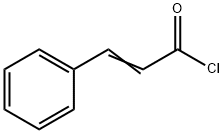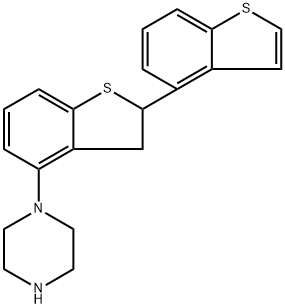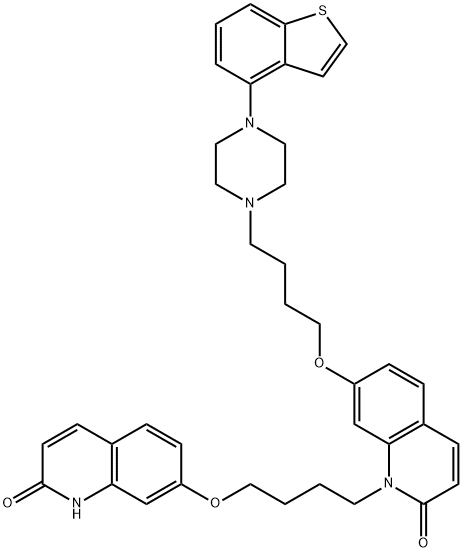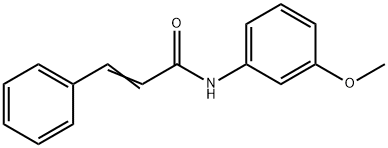Cinnamoyl chloride
Synonym(s):trans-3-Phenylacryloyl chloride;Cinnamic acid chloride;Cinnamoyl chloride
- CAS NO.:102-92-1
- Empirical Formula: C9H7ClO
- Molecular Weight: 166.6
- MDL number: MFCD00000732
- EINECS: 203-065-5
- SAFETY DATA SHEET (SDS)
- Update Date: 2024-12-23 19:56:12

What is Cinnamoyl chloride?
Chemical properties
white to yellowish crystalline solid
The Uses of Cinnamoyl chloride
Titrimetric determination of small amounts of water.
Synthesis Reference(s)
Organic Syntheses, Coll. Vol. 3, p. 714, 1955
Tetrahedron Letters, 14, p. 5121, 1973 DOI: 10.1016/S0040-4039(01)87403-7
Hazard
Skin irritant.
Purification Methods
Refractionate it in a vacuum until the distillate solidifies on cooling, and recrystallise it from pet ether. The trans-amide has m 145-150o (from H2O) [Beilstein 9 III 2711]. [Adams & Ulich J Am Chem Soc 42 605 1920, Bergmann et al. J Chem Soc 2524 1952, Beilstein 9 H 587, 9 I 233, 9 II 390, 9 III 2710, 9 IV 2020.]
Properties of Cinnamoyl chloride
| Melting point: | 35-37 °C (lit.) |
| Boiling point: | 256-258 °C (lit.) |
| Density | d445.3 1.1617 |
| refractive index | nD42.5 1.614 |
| Flash point: | >230 °F |
| storage temp. | 2-8°C |
| solubility | dioxane: 0.1 g/mL, clear |
| form | Crystalline Solid |
| color | White to yellow |
| Water Solubility | DECOMPOSES |
| Merck | 13,2323 |
| BRN | 606265 |
| CAS DataBase Reference | 102-92-1(CAS DataBase Reference) |
| NIST Chemistry Reference | 2-Propenoyl chloride, 3-phenyl-(102-92-1) |
| EPA Substance Registry System | 2-Propenoyl chloride, 3-phenyl- (102-92-1) |
Safety information for Cinnamoyl chloride
| Signal word | Danger |
| Pictogram(s) |
 Corrosion Corrosives GHS05 |
| GHS Hazard Statements |
H314:Skin corrosion/irritation |
| Precautionary Statement Codes |
P260:Do not breathe dust/fume/gas/mist/vapours/spray. P280:Wear protective gloves/protective clothing/eye protection/face protection. P363:Wash contaminated clothing before reuse. P303+P361+P353:IF ON SKIN (or hair): Remove/Take off Immediately all contaminated clothing. Rinse SKIN with water/shower. P305+P351+P338:IF IN EYES: Rinse cautiously with water for several minutes. Remove contact lenses, if present and easy to do. Continuerinsing. |
Computed Descriptors for Cinnamoyl chloride
Cinnamoyl chloride manufacturer
New Products
Tert-butyl bis(2-chloroethyl)carbamate (S)-3-Aminobutanenitrile hydrochloride N-Boc-D-alaninol N-BOC-D/L-ALANINOL N-octanoyl benzotriazole 4-Hydrazinobenzoic acid 3,4-Dibenzyloxybenzaldehyde Electrolytic Iron Powder 1,1’-CARBONYLDIIMIDAZOLE R-2-BENZYLOXY PROPIONIC ACID 4-HYDROXY BENZYL ALCOHOL 1,1’-CARBONYLDI (1,2-4 TRIAZOLE) S-2-CHLORO PROPIONIC ACID (2-Hydroxyphenyl)acetonitrile 4-Bromopyrazole 5-BROMO-2CYANO PYRIDINE 5,6-Dimethoxyindanone 5-broMo-2-chloro-N-cyclopentylpyriMidin-4-aMine 3-(Hydroxymethyl)benzoate N-Boc-2-chloroethylamine 1-Bromo-2-methoxy-3-nitrobenzene N-Methyl-3-cyclopenten-1-amine 2-Bromo-3-hydroxybenzaldehyde 1H-indazole-5-carboxamideRelated products of tetrahydrofuran
![8-(2,3-Dichlorophenyl)-8-aza-5-azoniaspiro[4.5]decane BroMide](https://img.chemicalbook.in/CAS/GIF/795313-24-5.gif)




![7-(4-chlorobutoxy)-1-{4-[(2-oxo-1,2-dihydroquinolin-7-yl)oxy]butyl}-1,2-dihydroquinolin-2-one](https://img.chemicalbook.in/CAS/20200515/GIF/2060029-80-1.gif)


You may like
-
 Cinnamoyl chloride CAS 102-92-1View Details
Cinnamoyl chloride CAS 102-92-1View Details
102-92-1 -
 7441-43-2 98%View Details
7441-43-2 98%View Details
7441-43-2 -
 1260741-78-3 6-Bromo-3-iodo-1-methyl-1H-indazole 98%View Details
1260741-78-3 6-Bromo-3-iodo-1-methyl-1H-indazole 98%View Details
1260741-78-3 -
 4-bromo-3,5-dimethylbenzenesulfonyl chloride 1581266-79-6 98%View Details
4-bromo-3,5-dimethylbenzenesulfonyl chloride 1581266-79-6 98%View Details
1581266-79-6 -
 2490430-37-8 98%View Details
2490430-37-8 98%View Details
2490430-37-8 -
 N-(5-Amino-2-methylphenyl)acetamide 5434-30-0 98%View Details
N-(5-Amino-2-methylphenyl)acetamide 5434-30-0 98%View Details
5434-30-0 -
 124371-59-1 98%View Details
124371-59-1 98%View Details
124371-59-1 -
 53857-52-2 98%View Details
53857-52-2 98%View Details
53857-52-2
Statement: All products displayed on this website are only used for non medical purposes such as industrial applications or scientific research, and cannot be used for clinical diagnosis or treatment of humans or animals. They are not medicinal or edible.